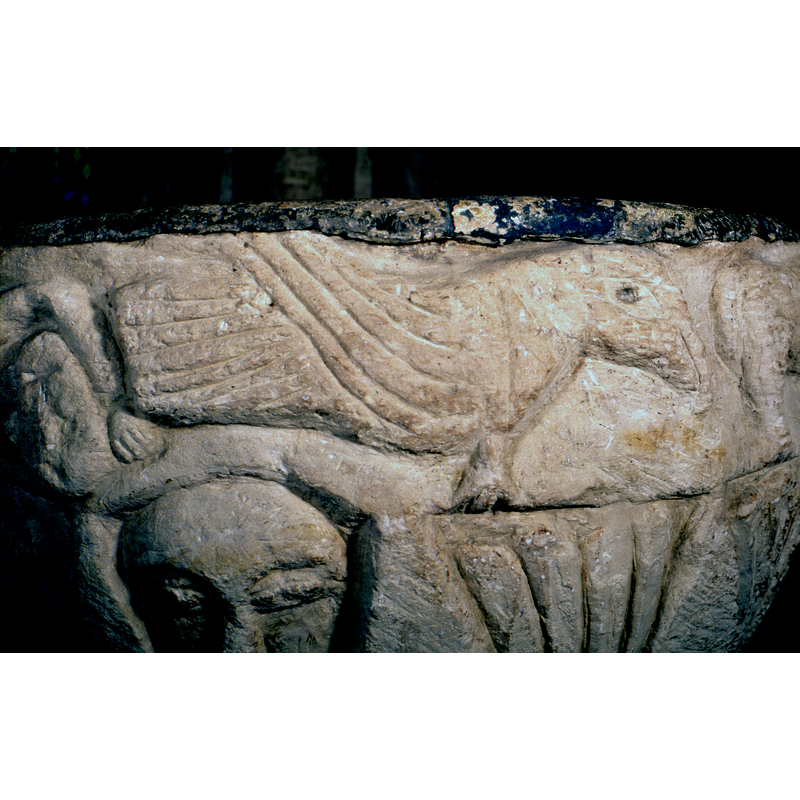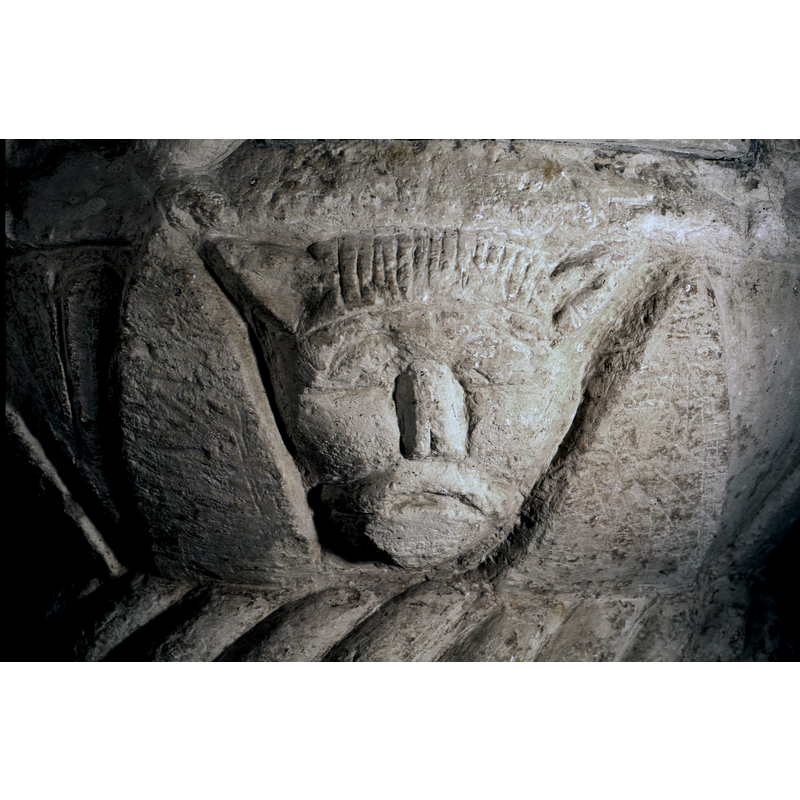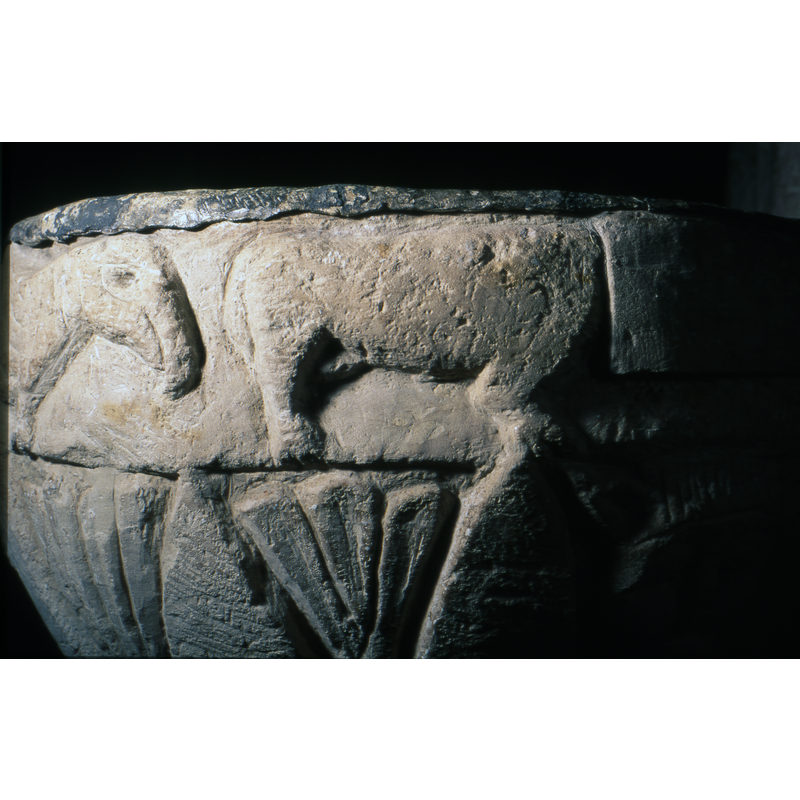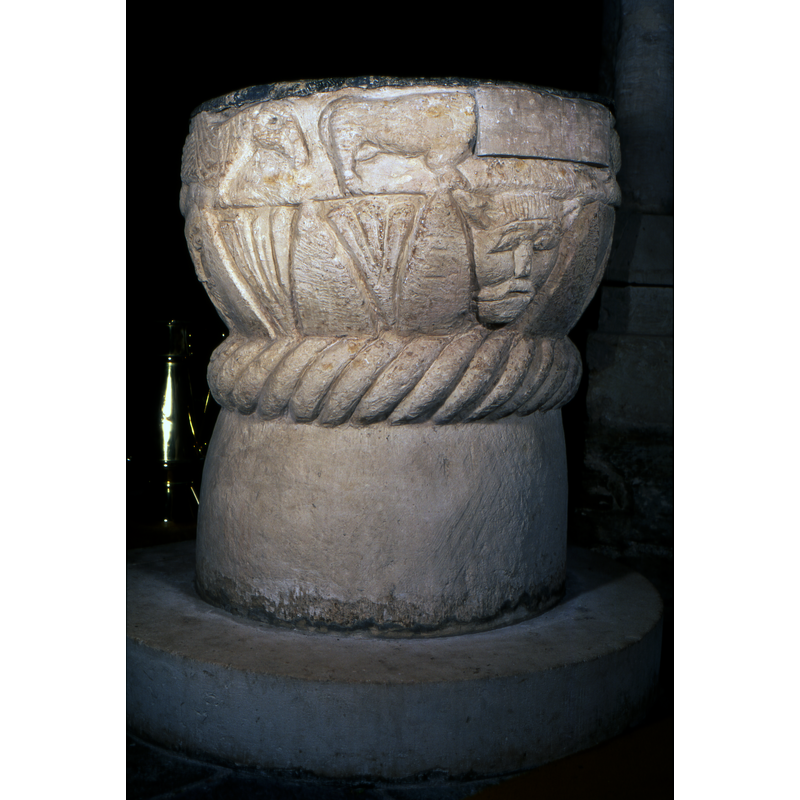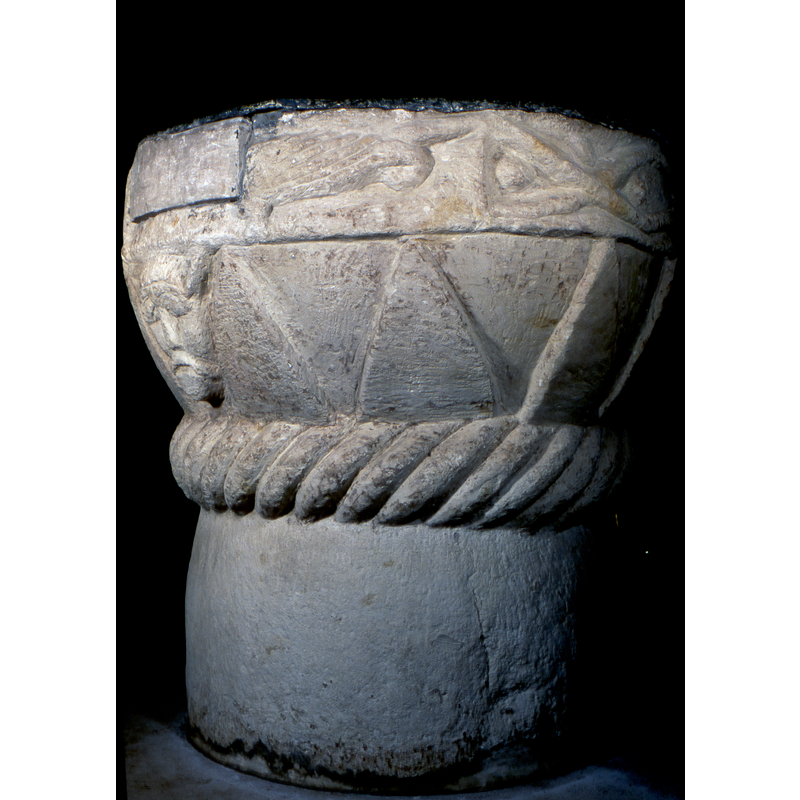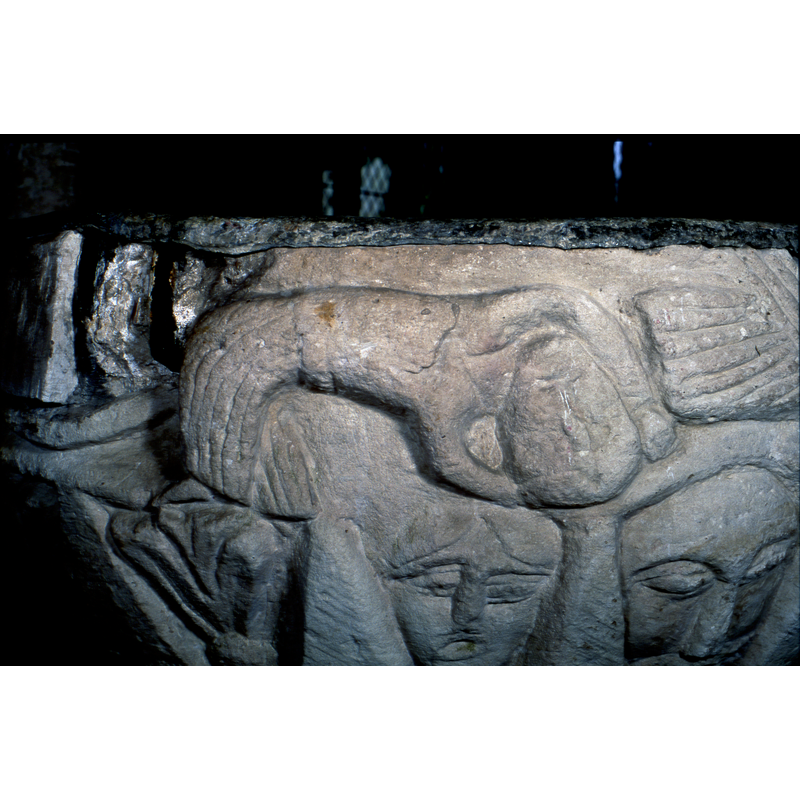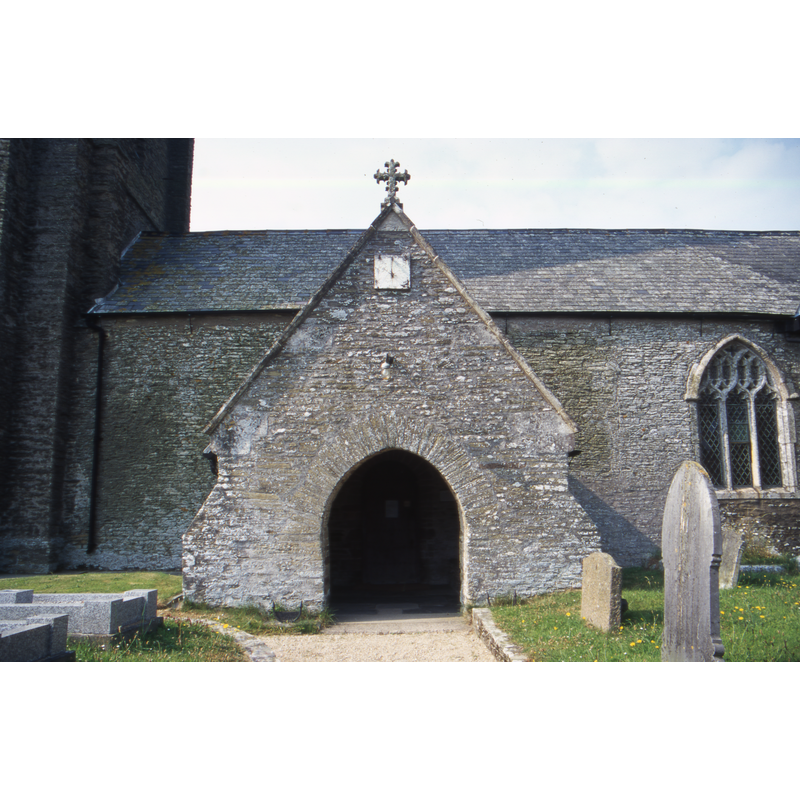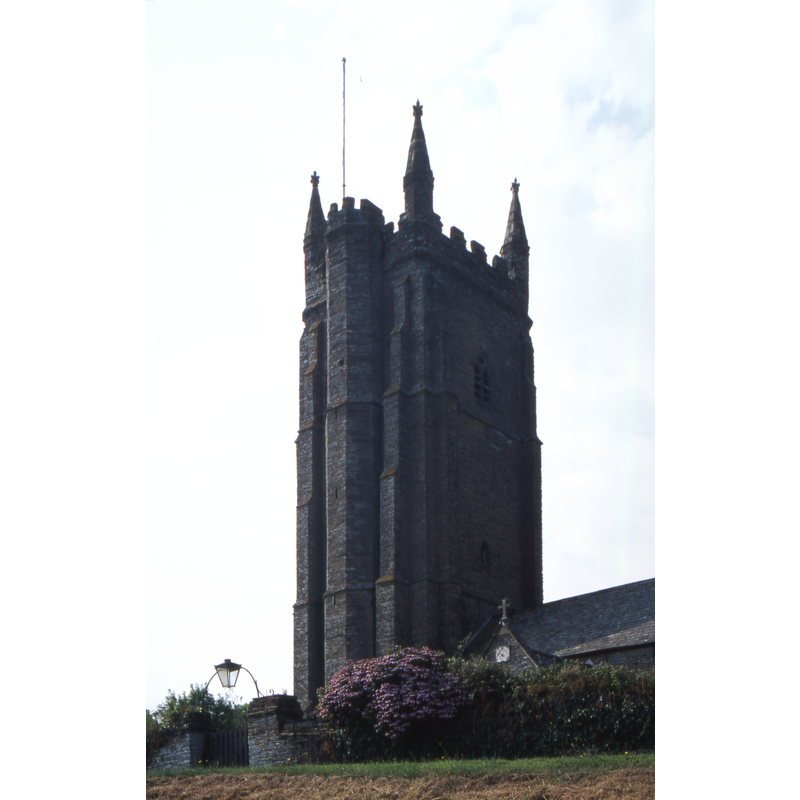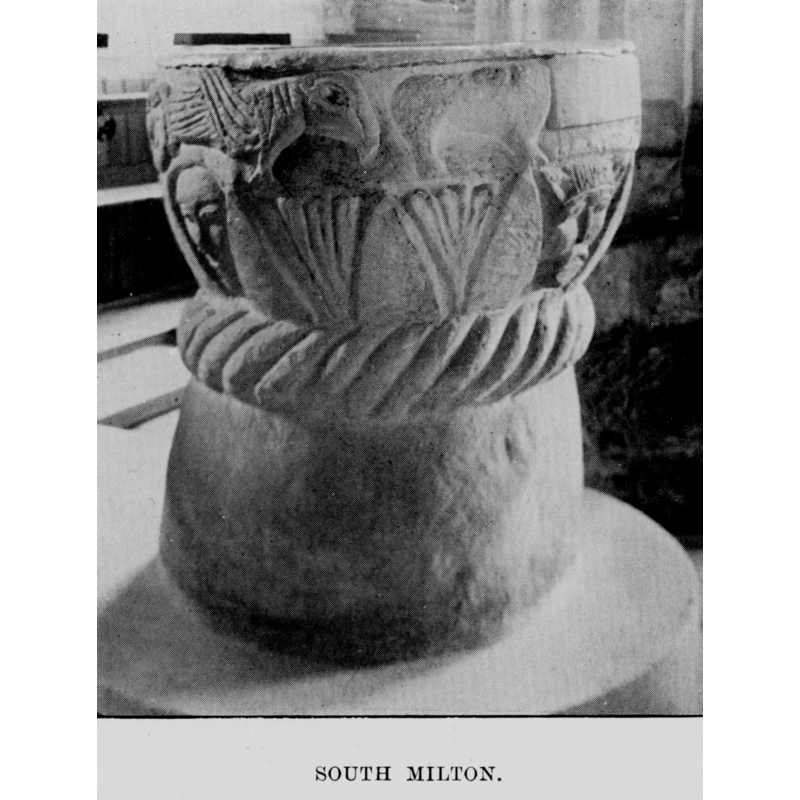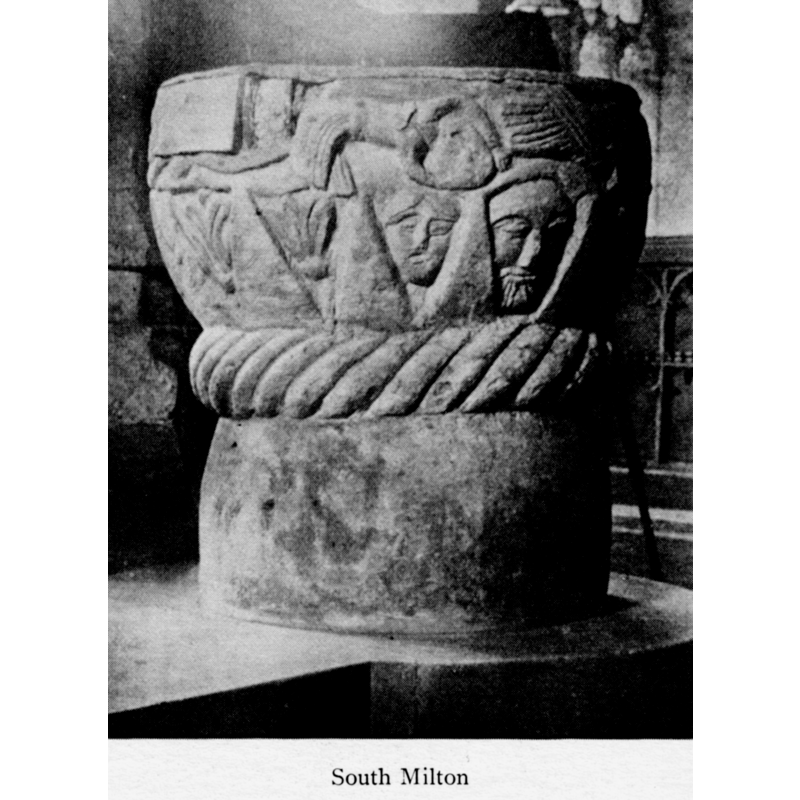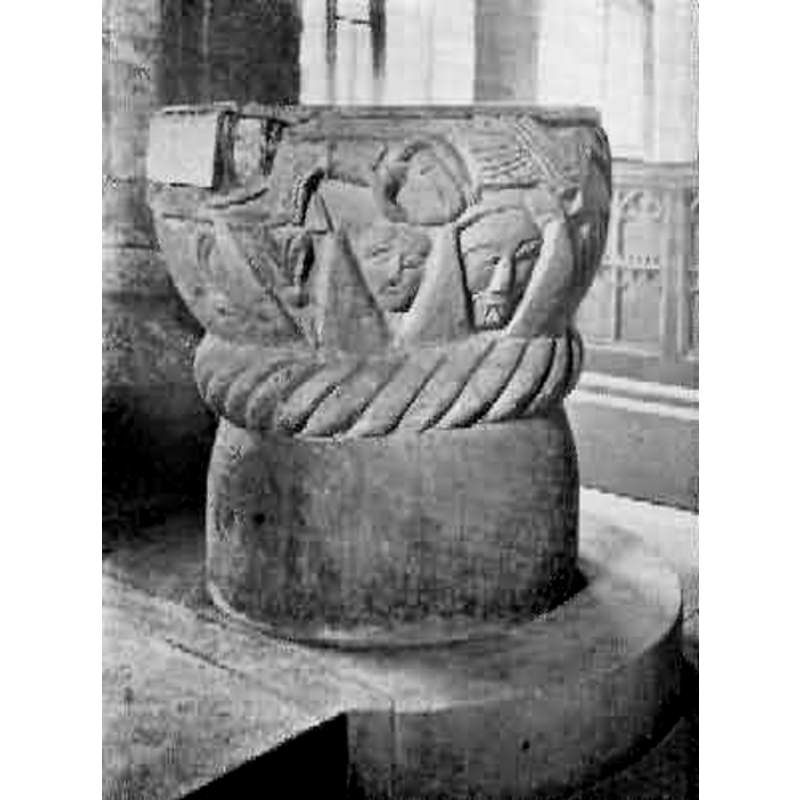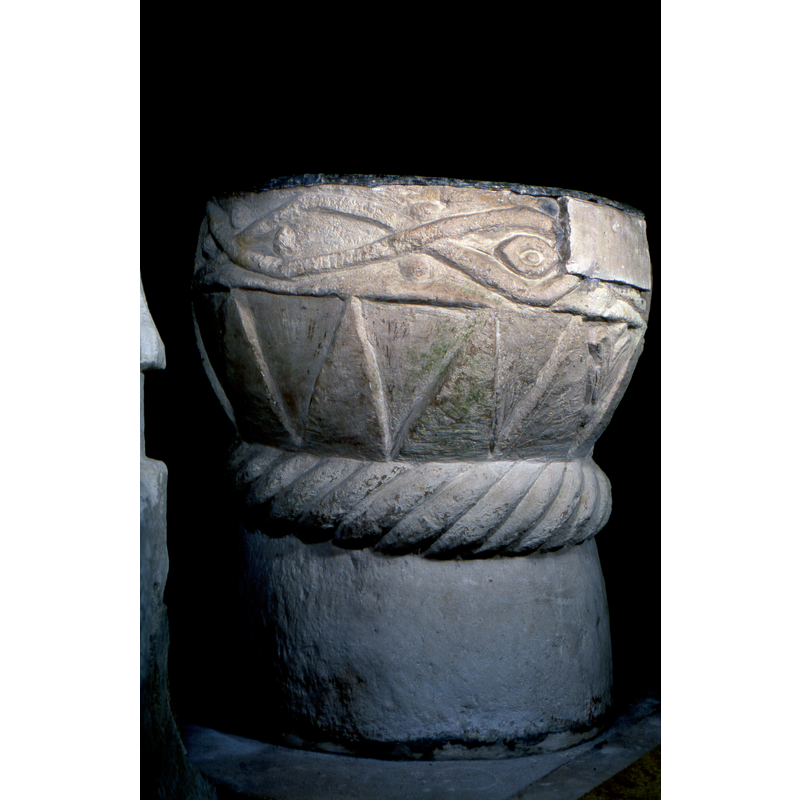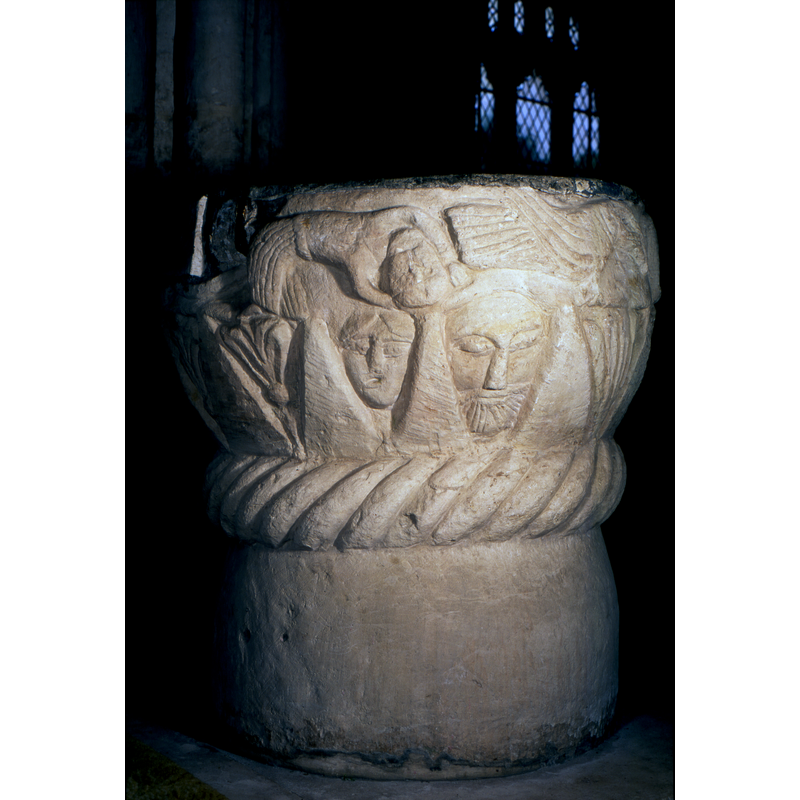South Milton / Mideltone
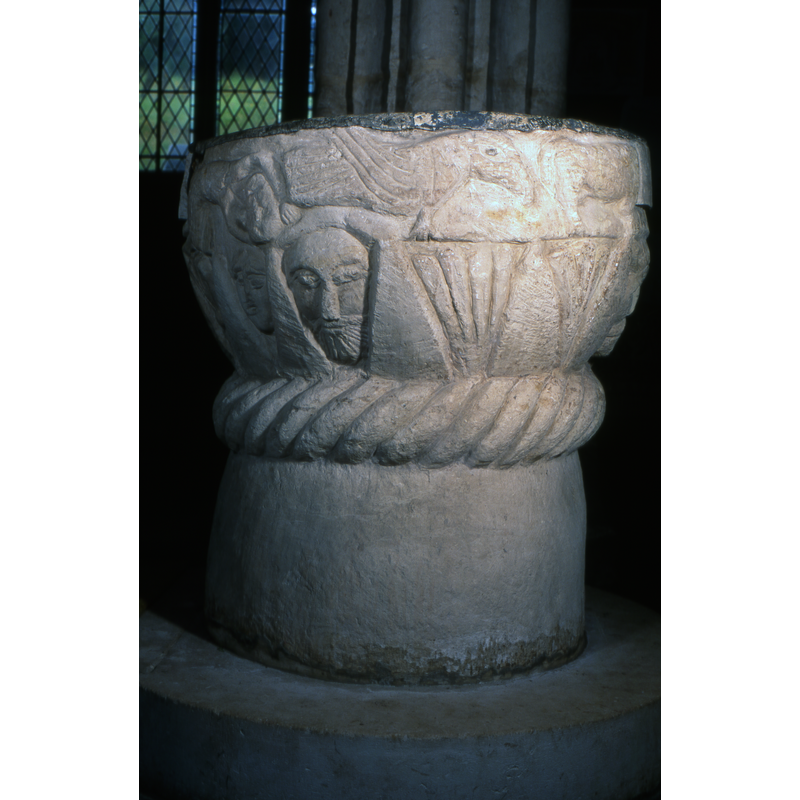
Image copyright © Baptisteria Sacra Index, 2023
Results: 22 records
animal - bird - eagle or dove?
animal - fabulous animal or monster - dragon?
animal - mammal - lion - head
animal - mammal - lion - passant
design element - motifs - diamond or lozenge - with circles
design element - motifs - foliage - palmette - 2
design element - motifs - rope moulding
design element - motifs - sawtooth
human figure - female - bent over backwards - dancer - Salome?
view of church exterior - south porch
view of church exterior - west tower
view of font
view of font
view of font
view of font
view of font
view of font
view of font
view of font
INFORMATION
FontID: 00278SOU
Object Type: Baptismal Font1
Church/Chapel: Parish Church of All Saints
Church Patron Saints: All Saints
Church Location: 5 New Buildings, South Milton, Kingsbridge TQ7 3JN, United Kingdom
Country Name: England
Location: Devon, South West
Directions to Site: Located off (W) the A381, 3 km WSW of Kingsbridge, on the coast of Bigbury Bay
Historical Region: Hundred of Diptford [in Domesday]
Font Location in Church: Inside the church, in the W end of the S nave
Century and Period: 11th - 12th century, Norman
Cognate Fonts: The fonts at Chickerell, Eardisley, Morwenstow, South Milton and Bishop's Teignton, all have a cable moulding that appears to contract the shape of the vessel into a cup-shape
Credit and Acknowledgements: We are grateful to Dr. Roger Peters, of www.wissensdrang.com, for his permission to use the transcription of and images from Stabb (1908)]
Church Notes: The church is said to have been built in or near a Druid Grove. and "generally agreed that the carvings are pagan in origin" (church guide pamphlet)
Font Notes:
Click to view
There is an entry for [South] Milton] [variant spelling] the the Domesday survey [https://opendomesday.org/place/SX6942/south-milton/] [accessed 11 January 2023]; it mentions neither cleric nor church in it. Lysons (1806-1822) lists a baptismal font "circular with figures of animals rudely carved". Described and illustrated in Stabb (1908): "There is a very richly carved font supposed to be of Saxon date [...], it has cable moulding round the base of the bowl, and there are figures of animals round the edge. There is a very curious figure of a woman bending backwards in an accordion-pleated skirt as if in the act of turning a somersault. This figure is also to be found on the font at St. Mary Church [cf. Index entry for St. Marychurch], and is, I think, meant to represent one of the vanities of the world to be renounced in baptism, for reasons which will be given in the description of that church.There are also carved faces, one of which is supposed to represent an evil spirit with the face of a Dane. This font is one of those said to be of Saxon date, but it seems doubtful if there are any fonts of so early a period in Devonshire; it is much more probable that this is of Early Norman date." Described and illustrated in Clarke (1914), who states that "the principal subject is at the centre of the eastern face; it represents the head of a faun or satyr, and is probably a survival of Roman art." Clarke further remarks on the repairs to the upper rim side: "the unfortunate result is that the original sculpture has been destroyed. This is especially to be deplored with respect to the eastern side; here a dragon and another animal, probably a lion, face one another as though in combat, but the heads of both are lost. There is no doubt about the dragon, its characteristics are unmistakable, but with regard to its oponent it is not easy to be quite certain. However, it has lion's paws, and the thin flanks and tufted tail usually associated with the king of beasts, so, although there is no trace of mane, I think it must be a lion. On the southern side is a dancing girl, bending backwards in the same posture as at St. Mary Church. Dancing had a religious import[ance]; it was thought that the whole universe was engaged in a general dance, and that in heaven and on earth the saints did honour to their Lord by dancing. Several passages of the 'Paradiso' of Dante prove this. I am inclined to adopt this interpretation of the dancer, rather than the one usually offered, namely, that it symbolises the sinful lusts of the flesh, which are renounced at baptism. Between the dancer and the lion is an eagle. The current belief was that the eagle renewed its youth by plunging into a fountain of water, therefore it was symbolical of regeneration by baptism. On the north side of the font is a strip of egg-and-cable ornament. This must originally been continued on the western part; traces of it may be perceived in the narrow strip below the inserted patch of stone, and for about an inch beyond it, extending to the dancer. Like the satyr's head, the egg-and-cable moulding was derived from Roman art." Noted in Pevsner (1952): "Circular, big, very elementary Early Norman; above a thick cable moulding a main frieze, zigzag with staring faces, and above this a narrower frieze with two animals and a woman falling back; the meaning is not clear." On-site notes: Norman font of goblet-shape carved of a single block of stone.The upper part of the basin sides has a broad band in which appear a human figure bent over backwards, a dove, a lion, serpents or dragons and romboid motif; the lower part of the basin sides has a large saw-tooth pattern throughout, with some of the spaces between the teeth filled with plants, a woman's face, a man's, some blanks, two more plants, a devil's or satyr's face and four blanks. A large rope motif ring is at the top of the base, while the rest of the base and round plinth are totally plain. The church guide [dated October 1998, gives the names of Janet Turner and Dennis Luke as churchwardens and possibly authors of the pamphlet?]) informs that there have been claims to the Druidic and therefore pagan origin of the font carvings, also identified as the faces of Pan/Midas/a Dane/satyr/Satan; of having Egyptian influences or even belonging to Phoenician traders, although it ends up stating that "the more probable view is that the Font is early Norman". Bond (1908) describes this font as being part of "a set of sculptured fonts which have been credited with undue antiquity, owing to the rudeness or uncouthness of their ornament; but it by no means follows that what is archaic is always ancient [...], a village font where the local mason tried his prentice hand on statuary" and assigns instead a 12th-century date at the earliest. The blank patches at the upper rim are probably repairs made where the staples (or their removal) broke the stone.
COORDINATES
Church Latitude & Longitude Decimal: 50.27199, -3.8285
Church Latitude & Longitude DMS: 50° 16′ 19.16″ N, 3° 49′ 42.6″ W
UTM: 30U 440960 5569201
MEDIUM AND MEASUREMENTS
Material: stone, limestone
Number of Pieces: one
Font Shape: hemispheric (mounted)-- chalice-shaped
Basin Interior Shape: round
Basin Exterior Shape: round
Drainage Notes: lead-lined
Rim Thickness: 11-15 cm*
Diameter (inside rim): 48-50 cm* / 47.5 cm**
Diameter (includes rim): 72-78 cm* / 71.25 cm**
Basin Depth: 25 cm*
Basin Total Height: 36-39 cm*
Height of Base: 44 cm* / 7.5 cm**
Font Height (less Plinth): 80-83 cm*
Font Height (with Plinth): 96-99 cm*
Notes on Measurements: * BSI on site [NB: the basin is somewhat irregular so the height measurements vary depending on the side] -- ** [measurements given in inches in Clarke (1914: 436)]
LID INFORMATION
Date: modern
Material: wood
REFERENCES
Bond, Francis, Fonts and Font Covers, London: Waterstone, 1985 c1908
Clarke, Kate M., "The baptismal fonts of Devon -- Part II", 46, Report and Transactions of the Devonshire Association for the Advancement of Science, Literature and Art, 1914, pp. 428-435; p. 430-431, 436 and p. opp. p. 430
Lysons, Daniel, Magna Britannia, being a concise topographical account of the several counties of Great Britain, London: Printed for T. Cadell and W. Davies, 1806-1822
Pevsner, Nikolaus, South Devon, Harmondsworth: Penguin Books, 1952
Stabb, John, Some old Devon churches, their roods, pulpits, fonts, etc., London: Simkin, [et al.], 1908-1916
Tyrrell-Green, E., Baptismal Fonts Classified and Illustrated, London: Society for Promoting Christian Knowledge: The Macmillan Co., 1928
